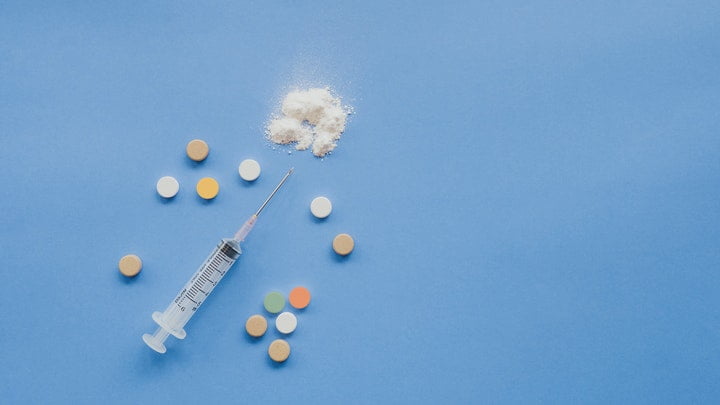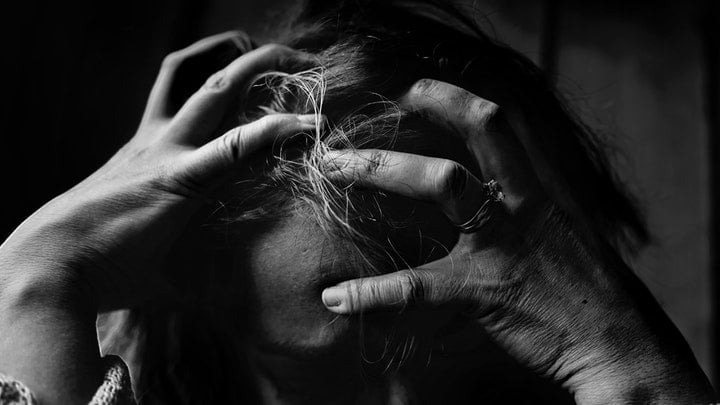Polydrug use involves using two or more different types of substances at once, which can amplify their effects and lead to a longer, stronger or altered high. This practise is extremely dangerous and carries a high risk of overdose as well as numerous detrimental effects to the body and brain. [1]
Alcohol, prescription medication and illicit substances such as heroin and cocaine are frequently involved in polydrug use. Some people may combine substances by accident, such as taking a number of prescription drugs at once.
No matter the intention, using multiple substances at once can lead to permanent physical or mental damage and can even result in death.
What are the dangers of combining different drugs?

The dangers of combining two or more substances cannot be overstated. The most common risk is a form of overdose known as combined drug intoxication, which can lead to permanent injury or even death.
Whether a substance is medically prescribed or illegally obtained, each one has its own effect on the body. Some may slow your breathing while others can increase your heart rate, and combining them both at once can overwhelm the body and lead to devastating effects.
Each substance can also intensify the effects of the other and increase the risk of overdose – for example, if you drink a large amount of alcohol you can potentially overdose on a relatively small amount of heroin.
Common dangers of combining different drugs:
- Long-term depression and anxiety
- Heart damage and heart failure
- Permanent brain damage
- Shallow and inefficient breathing
- Frequent seizures
- Increased risk of overdose
- Higher chance of developing an addiction
- Tears and ruptures to the stomach lining
- Gastrointestinal problems
- Liver and kidney damage
- Death
Many people combine different substances without realising that they are putting themselves at risk. A large number of teenagers and young people think nothing of smoking cannabis and drinking alcohol during the same evening, and this puts them at a greater risk of addiction due to their developing brains as well as increasing the chances of suffering a fatal overdose.
Substances such as alcohol and heroin can be extremely dangerous when ingested by themselves, so adding another drug to the mix can be a recipe for disaster.
Which drugs can be dangerous when combined?

While polydrug use contains a large element of danger no matter which substances are involved, certain combinations are more deadly than others. When mixed, these drugs can have potentially fatal consequences and extreme care should be taken in order to avoid combining them either intentionally or unintentionally.
Common drugs that should never be taken in combination:
- Alcohol and benzodiazepines
- Cocaine and heroin
- Alcohol and cocaine
- Cocaine and ecstasy
- Alcohol and sleeping pills
- Prescription medication
- Alcohol and opiates
If you or someone you know has taken a combination of any of the above substances, or any not listed, seek immediate medical advice.
What happens to my body when I combine heroin and cocaine?
The combination of heroin and cocaine is known as a ‘speedball’, and many people combine the two in order to experience an altered high as well as to amplify the effects of each substance.
This practice is extremely dangerous and carries an increased risk of overdose, as the combination of a depressant and a stimulant can incorrectly cause the individual to believe that they are relatively sober. As a result, they may take more than their body can handle, causing it to shut down and be unable to function without medical intervention.
What happens to my body when I combine cocaine and ecstasy?
Some people combine multiple stimulants such as cocaine and ecstasy in an attempt to experience a powerfully euphoric high, but this is rarely the end result. In reality, the two substances often cancel each other out, putting an increased amount of strain on the heart and raising the risk of suffering a drug-induced heart attack. [2]
Cocaine provides a quick and immediate high, lasting for around 15 minutes, whereas the effects of ecstasy are not usually felt until 30 minutes after ingestion and can last for up to six hours. As a result, the risk of overdose is increased if the individual continues to take cocaine while waiting for the ecstasy high to begin.
What happens to my body when I combine cocaine and alcohol?
A powerful stimulant, many people who use cocaine experience a number of uncomfortable side effects such as uncontrollable twitching or extreme anxiety. In an effort to counteract these symptoms they may consume a depressant such as alcohol.
Combining these two substances can be extremely dangerous and may result in a number of side effects including impaired judgement, dehydration, low blood pressure and slow or shallow breathing. The resulting high can also be extremely addictive and many people continue to combine cocaine and alcohol even outside of social or party situations.
What happens to my body when I combine alcohol and sleeping pills?
As alcohol and sleeping pills are both forms of sedative, combining the two can cause the body to shut down and stop breathing. Even one drink can have potentially fatal consequences when mixed with a sedative or hypnotic medication, as the heart rate can drop to dangerous levels while the breathing rate can slow and even stop entirely.
Some insomnia sufferers believe that combining their sleeping pills with alcohol will result in a deeper and more restful sleep, when in fact it can increase the risk of injury and death due to sleepwalking or respiratory problems.
What happens to my body when I combine prescription drugs?
Unless you are a trained and experienced medical professional, combining different types of prescription drugs is not advisable and can even be lethal in many cases. If you have been prescribed a specific medication by your doctor, it is extremely important that you understand whether you are able to consume alcohol or take any other medication alongside your prescription.
Many prescription medications do not react well to each other, and taking them together can result in a number of unpleasant and potentially dangerous side effects. This can also increase the risk of overdose and cause physical damage to many of your vital organs including the heart, kidney and lungs.
What are the signs and symptoms of a drug overdose?

One of the most dangerous potential consequences of combining different drugs is the increased risk of overdose, which can occur when the levels of specific drugs in the system become too high for the body to continue functioning.
It can often be difficult to know whether someone is experiencing an overdose as many of the symptoms can mimic the side effects of certain drugs, and each person may respond differently to an overdose depending on which substances they have ingested.
Most overdoses are accidental and commonly occur when an individual takes too much of a certain substance or combines two or more substances together.
Common signs and symptoms of a drug overdose:
- Blue-tinged lips or fingertips
- Nausea and vomiting
- Chest pain
- Lack of coordination, difficulty balancing
- Shallow breathing
- High body temperature
- Extreme paranoia and anxiety
- Convulsions
- Becoming aggressive
- Restlessness and agitation
- Extreme confusion
- Seizures
- Falling unconscious
If you believe that you or someone you know is experiencing a drug overdose, whether from taking too much of a certain substance or combining multiple drugs, call 999 immediately and seek prompt medical attention.
Do not leave the affected individual alone – stay with them at all times and roll them onto their side to prevent choking if they happen to vomit.
If possible you should inform the medics of the type and amount of drugs taken and whether they were combined with another substance such as alcohol.
Who is more likely to combine different drugs?

While anyone who uses prescription medication, illicit drugs, alcohol or any other substances are at risk of polydrug use either intentionally or unintentionally, certain groups of people are more vulnerable than others.
Co-occurring mental health disorders
Some people who are dealing with a mental health disorders such as anxiety, depression, bipolar disorder or schizophrenia attempt to self-medicate with alcohol and other substances. As a result, this group is more likely to engage in polydrug use as they are likely already taking prescribed medication or intentionally combining multiple substances.
Teenagers and young adults
As mentioned above, it is relatively common for teenagers and young adults to combine different substances with little understanding of the potential risks involved. Smoking cannabis and drinking alcohol at a party may seem normal and acceptable, but this practice can come with dangerous side effects. [3]
Chronic pain sufferers
The majority of people who have been diagnosed with chronic pain will be prescribed some type of pain reliever, either in the short or long-term.
It is important that this group understand the potential risk that comes with combining multiple types of prescription drugs or drinking alcohol while taking pain medication, as they are potentially at risk of suffering an unintentional overdose if medical instructions are not correctly followed.
Reference
[1] https://www.ncbi.nlm.nih.gov/pmc/articles/PMC7434110/





